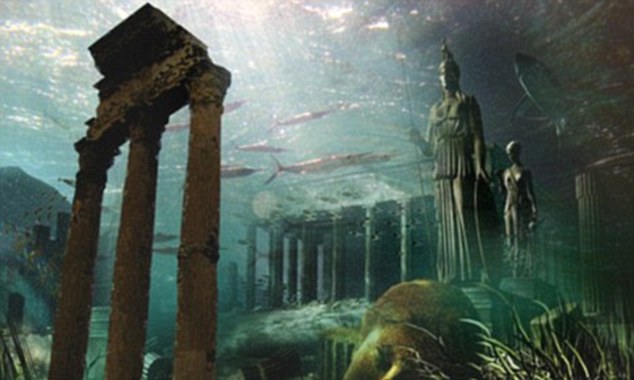Archaeologists believe the relics were left by Swedish nomads 11,000 years ago and the discovery may be evidence of one of the oldest settlements ever found in the Nordic region.Some of the relics are so well preserved, reports have dubbed the find 'Sweden’s Atlantis' and suggested the settlement may have been swallowed whole by the sea in the same way as the mythical island in the Atlantic Ocean.The artefacts were discovered by Professor Bjorn Nilsson from Soderton University, and a team from Lunds University, during an archaeological dive at Hano, off the coast of Skane County in Sweden.Buried 16 metres below the surface, Nilsson uncovered wood, flint tools, animal horns and ropes.Among the most notable items found include a harpoon carving made from an animal bone, and the bones of an ancient animal called aurochs.Aurochs are ancestors of modern-day cattle and lived through Europe before becoming extinct in the early 1600s. The last reported auroch died in Poland in 1627. This find is significant because it suggests a date for when these items would have been used.Many of the artefacts have been preserved because the diving location is rich in a sediment called gyttja.Black, gel-like Gyttja is formed when peat begins to decay. As the peat is buried, the amount of oxygen drops and it is thought this lack of oxygen prevented the organic artefacts from being lost.Nilsson told The Local: ‘Around 11,000 years ago there was a build-up in the area - a lagoon of sorts - and all the tree and bone pieces are preserved in it.'If the settlement was on dry land we would only have the stone-based things, nothing organic.’The dive was part of a three-year excavation partially funded by the Swedish National Heritage Board.Archaeologists are continuing the dig, and are now particularly interested to see whether there is also an ancient burial site in the region.This would add weight to the claims it was once a settlement location that has since been lost at sea.If the region was a settlement, it would have similarities with Atlantis - the mythical island first referred to by Greek philosopher Plato.Atlantis was said to have been a large island, or even a continent, in the Atlantic Ocean that sank and vanished almost overnight.However, this underwater civilisation has never been found, and many claim Plato either made it up, or the location was not in the Atlantic Ocean.Other claims suggest the island may have been near modern-day Santorini, off the coast of Greece.Nilsson is quick to dismiss the claims the settlement is ‘Sweden’s Atlantis’, however, stressing that the Swedes at the time would have been nomadic.This means that the settlement may have only been temporary, and that a village never permanently existed on the site - unlike the mythical Atlantis.(dailymail.co.uk)ANN.Az
Swedish divers unearth a 'Stone Age Atlantis' - PHOTO
Society
15:45 | 28.01.2014

Swedish divers unearth a 'Stone Age Atlantis' - PHOTO
Divers in Sweden have discovered a rare collection of Stone Age artefacts buried deep beneath the Baltic Sea.
Follow us !










